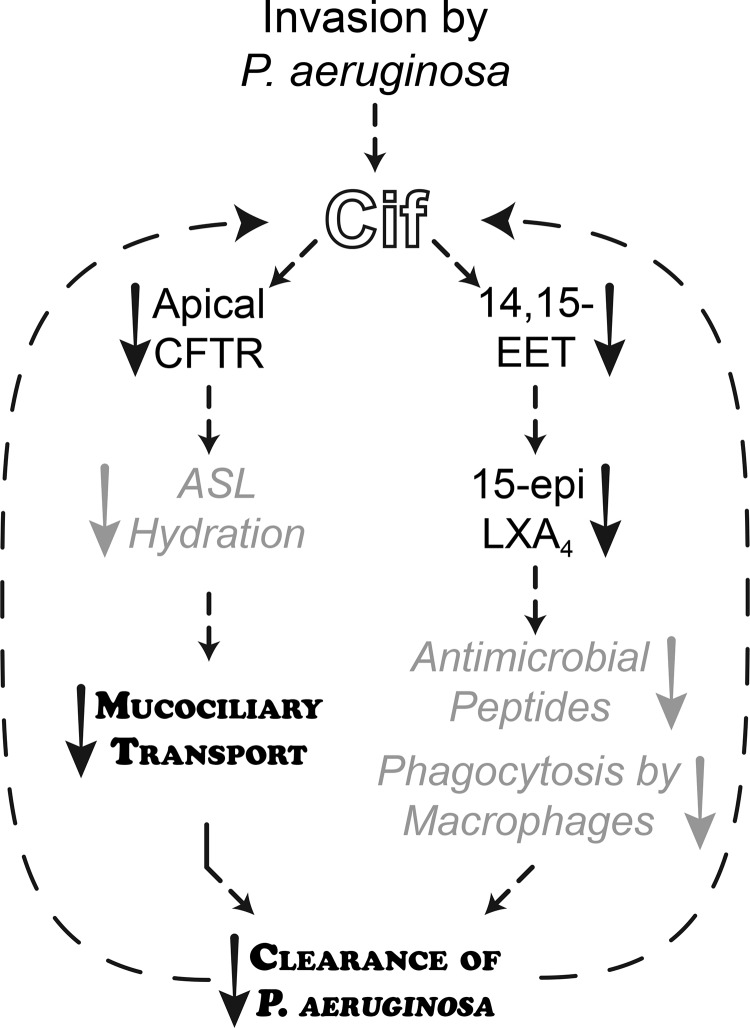Fig. 4.
Cif decreases host clearance of P. aeruginosa. As we have shown previously, Cif causes a decrease in cystic fibrosis transmembrane conductance regulator (CFTR) abundance at the apical membrane of bronchial epithelial cells that in turn decreases ion secretion. This likely dehydrates the airway surface liquid (ASL) and decreases MCT. The effect of Cif on MCT is notably rapid; like other virulence factors, the decrease in MCT may derive from a direct effect on cilia although a rapid CFTR-driven MCT effect has been seen with other stimuli (7). In addition to the effect of Cif effect on CFTR, our previous work shows that Cif hydrolyzes 14,15-epoxyeicosatrienoic acid (14,15-EET). Hydrolysis of 14,15-EET decreases the synthesis of 15-epi LXA4, a proresolving lipid mediator that enhances phagocytosis by macrophages and may increase production of antimicrobial peptides (3). Together, the effects of Cif on MCT and 15-epi LXA4 decrease clearance of P. aeruginosa in the acute pneumonia model, likely increasing the severity or duration of the infection. Finally, because cif expression persists in CF clinical isolates (9, 10), reduced clearance is likely to yield continued exposure to Cif. Key: Standard black text, published work; gray arrows and italic text, proposed mechanisms (3, 7); bold, small capital text, effects demonstrated in this work.

